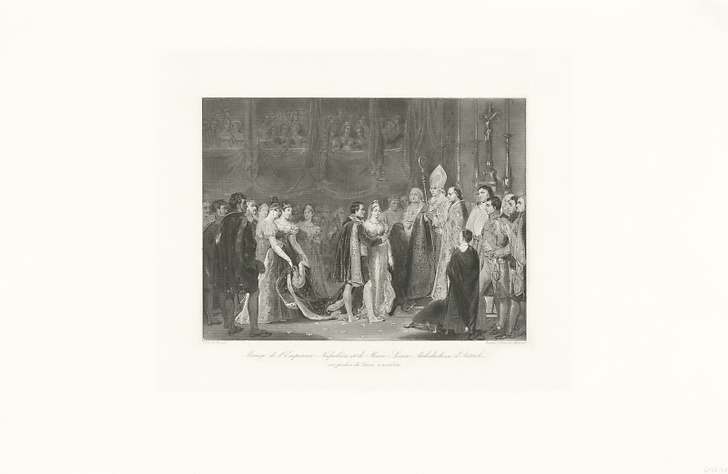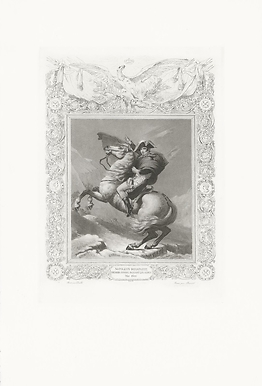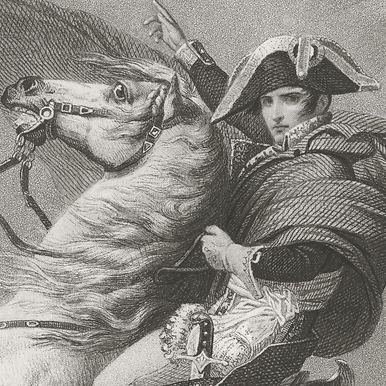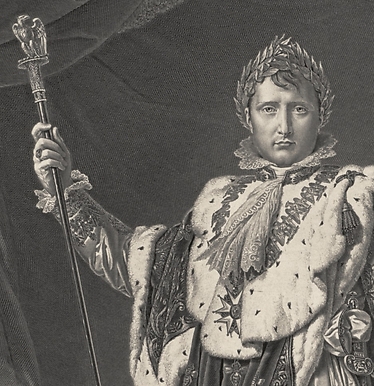Engraving The wedding of Napoleon Ist and Marie-Louise at the Louvre Palace on April 2, 1810 - Léopold Massard d'après Rouget
KG000494
Interpretation of a painting by Georges Rouget (1783-1869) Engraved by Léopold Massard (1812-1889) Modern proof printed from the original plate of the Chalcographie du Louvre.
This engraving is part of the "Collection Gavard", a vast undertaking commissioned in 1840 for the realization of a work on...
Read more
Interpretation of a painting by Georges Rouget (1783-1869) Engraved by Léopold Massard (1812-1889) Modern proof printed from the original plate of the Chalcographie du Louvre.
This engraving is part of the "Collection Gavard", a vast undertaking commissioned in 1840 for the realization of a work on "The Historical Galleries of Versailles".
The Gavard Collection is the graphic reflection of the great thought of King Louis-Philippe: the museum of national history that he had created in Versailles and dedicated to all the glories of France. The Historical Galleries of Versailles were solemnly inaugurated on June 19, 1837. Once the museum had been created, it remained to give it, through books, the widest possible influence. Charles Gavard, a staff captain and former student of the École Polytechnique, was the driving force behind this dissemination effort.
The work was presented in three editions: luxury, semi-luxury and popular. The publication was completed in 1849: 1,880 engraved plates divided into 19 volumes. This collection constitutes the first illustrated historical encyclopedia. Each engraved plate was accompanied by a note established by a historian or a literator then in reputation.
One hundred and fifty-four engravers and thirty-two draftsmen collaborated on the work. The techniques used for the engraving of the plates are diverse, but one notes a large predominance of the steel engraving, which was then very fashionable.
This encyclopedic and artistic work was superbly organized thanks to the methodical qualities of Charles Gavard. As for the technical work, it was simplified by an invention: a drawing instrument, developed and made practical by Gavard under the name of diagraph. It is in short an application of the principle of the clear room and that of the pantograph, and the intervention of this instrument facilitated the graphic reduction of the tables.
Close
Login to see prices
Sold by GrandPalaisRmn










